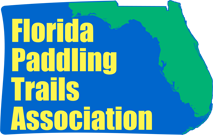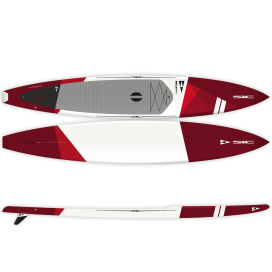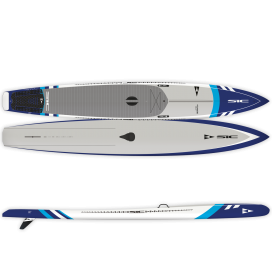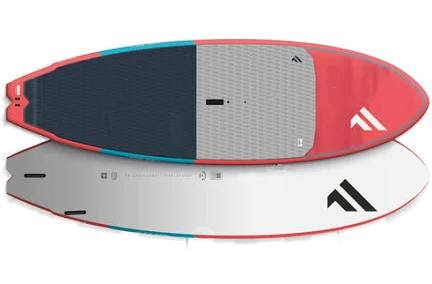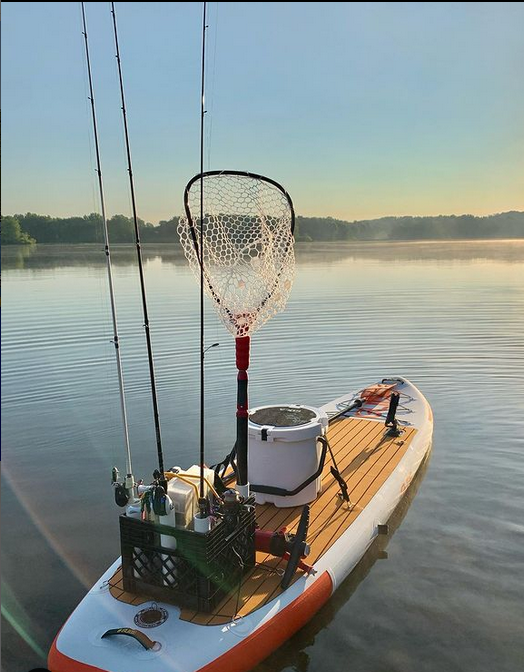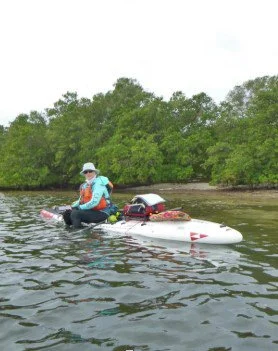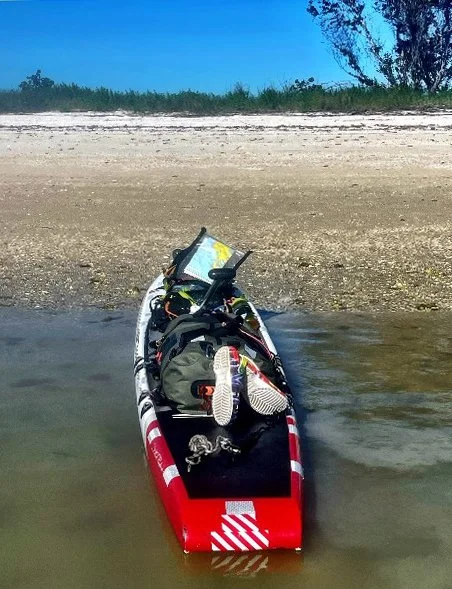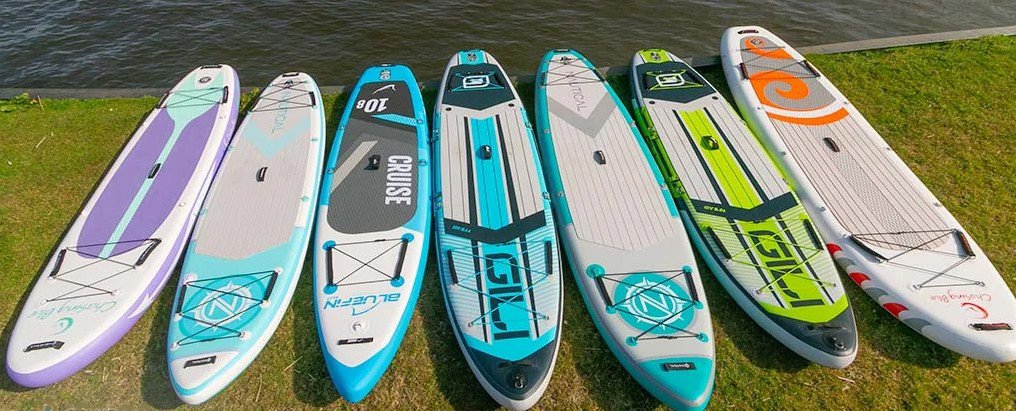
Selecting a Stand Up Paddleboard (SUP)
GENERAL
How do you even begin to choose the paddleboard that is right for you? Selecting a paddleboard can be a daunting task because there are so many available choices. To start, think about what kind of paddling do you want to do. For example, do you want to surf, take multi-day expeditions, or float down a river with your dog or child? Different boards are best suited to different activities. Paddleboarding is a fun, safe activity for people of all ages and skills levels. Finding the right equipment for your needs will make your experience even more enjoyable. Before buying a board, you should be familiar with basic factors that will affect your choice. Knowledge of these factors can help whittle away many of your choices into something more manageable.
General Types of Stand Up Paddleboards (SUPs)
There are many different types of SUPs, all used for different purposes. Some fit multiple categories. It helps to know what you plan to use your SUP for, and in what type of environment. Some basics are:
All Around Sup
All Around SUPs - All-around SUPS are versatile boards and meant to handle a range of water conditions. These boards range from about 10’6”-12’ long and 31-35” wide. All-around boards work for a range of activities, including SUP yoga, SUP fitness, and leisurely paddling. Their width makes them stable thus appropriate for beginners.
Touring/Expedition SUP
Touring and Expedition SUPs - Touring and expedition SUPS are designed for paddlers who want to travel longer distances and/or do multi-day trips. These boards range from 12’-14’ and 26”-32” width. For multiday trips, the extra width provides stability for the added gear. These boards also work well for people who want to carry a child or a dog or do SUP yoga.
Racing SUP
Racing SUPs - Racing SUPs, not surprisingly, are narrower than touring SUPs. They range from 12’-14’ and 20”-26” width. Some boards designed for big water races are dug-out so the paddler is closer to the water.
Surf SUP
Surf SUPs - Not much beats a day playing in the waves, and SUP surf is great fun. SUP surf boards range from 8’6”-11’ and 30-32” width. Their width gives them stability and maneuverability in the waves.
Fishing SUPs
Fishing SUP - SUP fishing has exploded in popularity. These boards tend to be very stable and wide to carry the paddler and gear.
Factors That Affect Performance and Handling
Hard vs Inflatable - When buying a SUP, people frequently ask whether they should buy an inflatable or rigid board. Both types have pros and cons.
> Inflatables are the first choice for many paddlers. They are easy to store and transport. They don’t hurt when and if you fall on them, and they don’t easily damage. For that reason, whitewater SUPs are primarily inflatable. They are less expensive than hard boards so are an entry pointy for people just getting into the sport.
> Hard/rigid boards are made of fiberglass over a foam core. They are more susceptible to dings and damage than inflatables. These boards are generally more stable than inflatable SUPs and handle better in waves and choppy conditions. Further, they are less susceptible to being pushed around by wind. Thick inflatable SUPs can be difficult to handle in windy conditions. See Weight and Construction below.
Planing vs Displacement Hull - Boards with planning hulls have rounded noses and are flat and wide. SUP surf boards have planning hulls so they can ride over the water. Boards with displacement hulls have pointy noses and ride through the water, more like a kayak. Racing and touring boards have displacement hulls because they are more efficient. The hulls have a short semi-v entry.
Length - Generally, the longer the boat, the faster it will travel through the water. However, the longer the boat, the less maneuverable it will be.
Beam - The wider the boat, the more stable it will be. However, the wider the boat the slower it will be, and require more effort to paddle.
Rocker - This is the amount of curvature that you can see if you view the bottom of the boat from the side, like the rail of a rocking chair. The more rocker means better turning ability. However, the more rocker the boat has, the less straight line tracking ability it has.
Stability - See Beam above
Thickness/Volume - Your choice of boards depends on your size and weight. Paddling a too small paddleboard will not be fun. Paddling magazines have helpful charts for choosing the right size and volume for your size, ability, and type of paddling. Many paddling stores have demos and “try before you buy” options, and these stores can help you find the right thickness/volume board for you. inflatables should not be any thicker than is needed for the weight it will be carrying.
Fins - Fins provide tracking and stability to a board. Generally, larger fins with wider bases and longer front edges will track straighter and provide more stability. Smaller fins tend to provide better maneuverability. Most fins are removable, some require a special tool.
Some common SUP fin types are:
>Single fin: Many SUPs include a single fin placed in a fin box and secured with a nut and screw. The fin box has a channel for the fin to slide back and forth in. The single fin provides good tracking and minimal drag, making it a good choice for flatwater paddling.
>3-fin setup: Also called a thruster, this setup promotes straight tracking on flatwater and offers good control in surf. All three fins are usually about the same size.
>2+1 setup: This configuration includes a larger center fin with a smaller fin on each side of it with the smaller fins slightly behind and to the sides of the larger fin. This is a common setup on Surfing SUPs.
> Quad fins: Quad fins are 4 fins total, with a large and small fin mounted along the rail on both sides of the tail. These help the board track better in the waves.
>Fins for inflatable SUPs: Inflatable SUPs can have any of the fin configurations above. What sets them apart is that they feature either flexible rubber fins or detachable semi-rigid fins that are attached to the board.
Weight and Construction – Weight not only affects the handling of your SUP, but also affects your ability to load and unload your board to and from your vehicle, as well as carrying it to and from the water. As loading and unloading becomes more difficult, you will likely find that you use your SUP less and less.
>Inflatables - Are the first choice for many paddlers. They are easy to store and transport. They don’t hurt when and if you fall on them, and they don’t easily damage. For that reason, whitewater SUPs are primarily inflatable. They are less expensive than hard boards so are an entry point for people just getting into the sport. They generally come with an inflating pump.
>Wood - Most wood kayaks are made of either Paulonia wood or bamboo, which have a high strength to weight ratio. They can be made in any shape or design, and are similar in weight to fiberglass and epoxy over EPS foam boards. The boards usually have a fiberglass and epoxy finish. There are wood SUP companies that specialize in custom boards, as well as kit boards.
>Plastics - Boats made of polyethylene plastic or other “soft” plastics are manufactured by roto-molding. They are abundant, least expensive, most durable and most impact resistant of SUP construction materials. Unfortunately, they are usually the heaviest, and not found in the performance models.
>Fiberglass and epoxy over EPS foam - This is probably the most common type of SUP construction, and most commonly found in performance models.
>Soft Tops - Soft tops are made from an EPS core foam that’s cut into stand up paddle board shape. Higher-end soft tops have one or numerous layers of fiberglass wrapped around the EPS core. This extra layer makes the board stiffer and easier to maneuver during activities like surfing. They are the one of the heaviest of boards, but they are also one of the more affordable. They are great for kids, pets, and beginners alike.
>Composites - This includes Kevlar, and carbon fiber. These materials make the boats stiffer, much lighter and cost considerably more than plastic SUPs, and are usually found on higher end touring and racing SUPs.
Safety Factors
Leashes – Leashes keep you tethered to your board, and keep you from getting separated from your board in the event you should fall off. They are attached to your ankle and are generally long enough so that you have sufficient mobility on your board. There are leashes designed for specific types of paddling. Take this into consideration when choosing a leash. Wearing a leash is a big part of paddleboard safety, both for yourself and others. For most Florida paddling, you can use a straight leash for SUP surf and a coiled leash for river or coastal paddling. Whitewater SUPs or SUPs on faster-moving waters often require quick-release leashes.
Weight Capacity - Most all boards have a weight capacity, which you should find in the manufacturers specs.
Deck Pads - Most boards have built in deck pads. These should provide both foot and seated grip and comfort. There are also companies that make add-on traction pads if you are not satisfied with yours. Good grip can aid considerably with stability and board control.
Carrying Handles/Straps - Butterfly handles tend to be one of the better options for carrying and are easier on the hands. Regardless of the type of handle, it should be comfortable enough to carry your board safely to and from the water.
Strategies for Selecting the Right SUP
Paddle with Friends/Join a Paddling Club - The major advantages of joining a group before you purchase a SUP are that you can get expert advice on which boat to buy, many members will let you try their boats and they, as well as club members often have good used boats for sale.
Take a Skills Class - Taking a class from an outfitter, or certified instructor before you buy has the advantage of improving your skills, safety, risk assessment, comfort level, and giving you an idea of what you want in a SUP. Learning proper technique will both help you paddle safely and reduce the chance of injury.
Check with Outfitters - Find outfitters that rent boats or let you try before buying. Often outfitters have good deals on used or demo SUPs.
Check the Internet - Check "Craig's List" and "Paddling.com" classifieds, and dealers to see what SUPs are for sale. Used SUPs sell for about half the cost of a new boat. Most major SUP manufacturers have a web site which describes their SUPs and some have returned SUPs for sale with full warranties, and at reduced prices. There are also classified ads on many paddling club web sites.
Read Paddling Magazines – Paddling Magazine has great SUP articles and SUP reviews. Their yearly SUP Gear Guide has a wealth of information about manufacturers and their SUPs.
Whitney Sanford, Section 8 of Florida’s CT. Florida Waterscapes – culture, history, and ecology of Florida’s water
Photo credit: Jim Greenhalgh
Loaded Touring/Expedition SUP
Special thanks to Whitney Sanford for her photos and her contribution to the SUP section.
Bottom Line
If at all possible, you should always try out a SUP before buying. No one board is good for everyone. The board should feel like an extension of your body, and you should feel comfortable on it. After trying many boards, you will likely come across one that feels like it fits as soon as you get on it and take it out on the water. Happy Trails!
